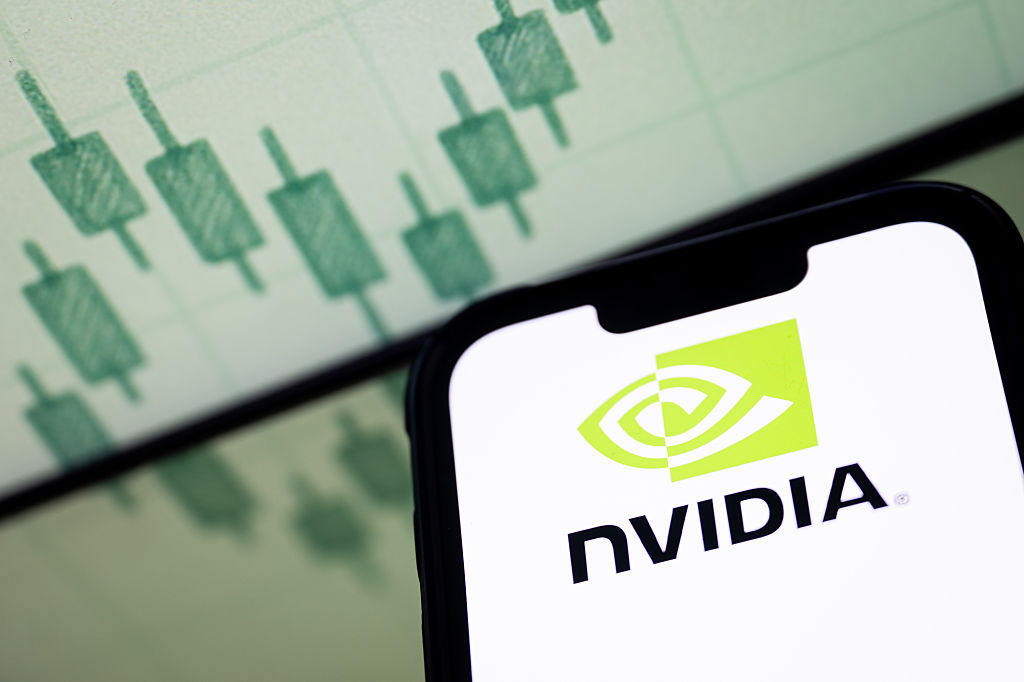Nvidia becomes world’s first $5 trillion company
Less than four months after becoming the world’s first $4 trillion company, Nvidia has hit the next big milestone. Is Nvidia’s giant valuation justified?


Nvidia has made stock market history once again by becoming the first company in history to achieve a $5 trillion market cap.
Shares in Nvidia (NASDAQ:NVDA) gained close to 5% in the opening half hour of trading on 29 October, enough to push its market cap beyond the $5 trillion threshold.
This latest milestone has been broken less than four months after Nvidia became the world’s first $4 trillion company – an achievement that, so far, only Microsoft (NASDAQ:MSFT) and Apple (NASDAQ:AAPL) have matched, underscoring the extent to which Nvidia is leaving other companies behind in its wake.
MoneyWeek
Subscribe to MoneyWeek today and get your first six magazine issues absolutely FREE

Sign up to Money Morning
Don't miss the latest investment and personal finances news, market analysis, plus money-saving tips with our free twice-daily newsletter
Don't miss the latest investment and personal finances news, market analysis, plus money-saving tips with our free twice-daily newsletter
“Nvidia's chips remain the new oil or gold in this world for the tech ecosystem,” said Dan Ives, head of global technology research at Wedbush Securities.
Nvidia’s share price has gained % in the 12 months to 28 October, and Y% so far this year.
During that run, Nvidia has shrugged off challenges from the emergence of low-compute Chinese AI start-up DeepSeek, the turmoil that followed Trump’s tariffs and strained US-China trade relations that have threatened to curtail Nvidia’s exports to one of the world’s largest chip markets.
And while Nvidia seems to constantly be able to rise to the challenges that the world throws its way, there is growing scepticism towards the artificial intelligence (AI) mania that is currently gripping the stock markets. This will inevitably raise questions over whether or not Nvidia’s valuation is rational.
What pushed Nvidia’s market cap beyond $5 trillion?
Nvidia’s rise to becoming the world’s most valuable company has been propelled by its central position in the artificial intelligence (AI) revolution. Its graphics processing units (GPUs) are viewed as the cutting edge within the industry; not only are these chips viewed as the best available for training and improving AI models, but most AI developers now specifically build their software to run on Nvidia architecture.
The surge that saw Nvidia’s stock leap across the $5 trillion threshold was prompted by a keynote speech from its CEO, Jensen Huang, at Nvidia GTC Live in Washington DC on 28 October.
Huang made several announcements that each may have pushed its share price upwards in their own right, including a partnership with data analytics company Palantir (NASDAQ:PLTR) and a $1 billion stake in Nokia to develop 6G cellular technology to run on Nvidia chips. But perhaps the biggest announcement of all in terms of Nvidia’s fundamentals was that the company has “visibility” of $500 billion revenue through to the end of next year.
“This is how much business is on the books,” said Huang, referring to the backlog of orders for Nvidia’s Blackwell chips, as well as its next-generation Rubin chips which are expected to enter production next year. “Half a trillion dollars so far.”
These numbers have been received positively by analysts. “Even assuming the most conservative interpretation of [Huang’s] commentary [that all Data Center revenue across calendar years 2025 and 2026 would be over $500 billion] would suggest our assumptions for Data Center sales over the next six quarters are roughly 20% too conservative,” said Matt Bryson, managing director, equity research at Wedbush Securities.
Bank of America research analyst Vivek Arya raised his price objective for Nvidia stock to $275 from $235, saying that consensus revenue expectations were perhaps 10% too low and that “we believe Nvidia can maintain its strong mid-70s gross margin on the strength of its products, as it has strong co-design and volume support from multiple memory suppliers.”
But the catalyst that finally tipped Nvidia over $5 trillion came on the morning of 29 October, when president Donald Trump suggested that he will discuss Blackwell chips with China’s president Xi Jinping when the two meet for trade talks later this week.
Nvidia is currently barred from exporting its most advanced chips to China and this is largely down to US trade restrictions on strategically critical technology (though Beijing is also restricting imports in order to protect its own domestic chipmaking industry). With Huang having previously estimated the Chinese chip market could be worth $50 billion, but no sales to the country currently featuring in Nvidia’s projections, regaining access to this market would be a significant development for Nvidia.
Should you invest in Nvidia?
Many investors will baulk at the idea of any individual company being worth $5 trillion. Nvidia may or may not be worth this amount – it’s the nature of the stock market that prices can only be justified or deemed too expensive with hindsight.
The investment case for Nvidia assumes that the rollout of AI – and the consequent spend on Nvidia’s chips – will continue to accelerate into the future.
But a slowdown could challenge this thesis. Many are worried that the stock market, saturated as it is with AI-focused mega-cap stocks, represents an AI bubble that could burst.
On this reckoning, Nvidia might be overvalued at $5 trillion.
That said, Nvidia has made a track record of confounding naysayers in recent years. Its shares gained over 1,300% in the three years to 28 October (a period that begins almost exactly one month before ChatGPT’s public launch). Throughout most of that run, various commentators have argued that Nvidia’s valuation was too high.
Ultimately, investing in Nvidia shares is an individual decision and should be based on an individual’s circumstances. It is worth noting, though, that Nvidia currently comprises over 8% of the S&P 500 and 5% of the MSCI All World index (an index that represents the global stock market), so you may well already have significant exposure to Nvidia via passive investments or your pension.
Get the latest financial news, insights and expert analysis from our award-winning MoneyWeek team, to help you understand what really matters when it comes to your finances.

Dan is a financial journalist who, prior to joining MoneyWeek, spent five years writing for OPTO, an investment magazine focused on growth and technology stocks, ETFs and thematic investing.
Before becoming a writer, Dan spent six years working in talent acquisition in the tech sector, including for credit scoring start-up ClearScore where he first developed an interest in personal finance.
Dan studied Social Anthropology and Management at Sidney Sussex College and the Judge Business School, Cambridge University. Outside finance, he also enjoys travel writing, and has edited two published travel books.
-
 Top 10 locations for buyers and renters revealed
Top 10 locations for buyers and renters revealedLondon is crowned as the most popular location for renters and buyers, despite rising costs. But where else are house hunters heading to?
-
 Making financial gifts to loved ones? Write it down or risk giving an IHT bill too
Making financial gifts to loved ones? Write it down or risk giving an IHT bill tooGiving gifts can be a way to pass on wealth and reduce the inheritance tax bill on your estate but do it wrong and you could leave family and friends more than they bargained for.